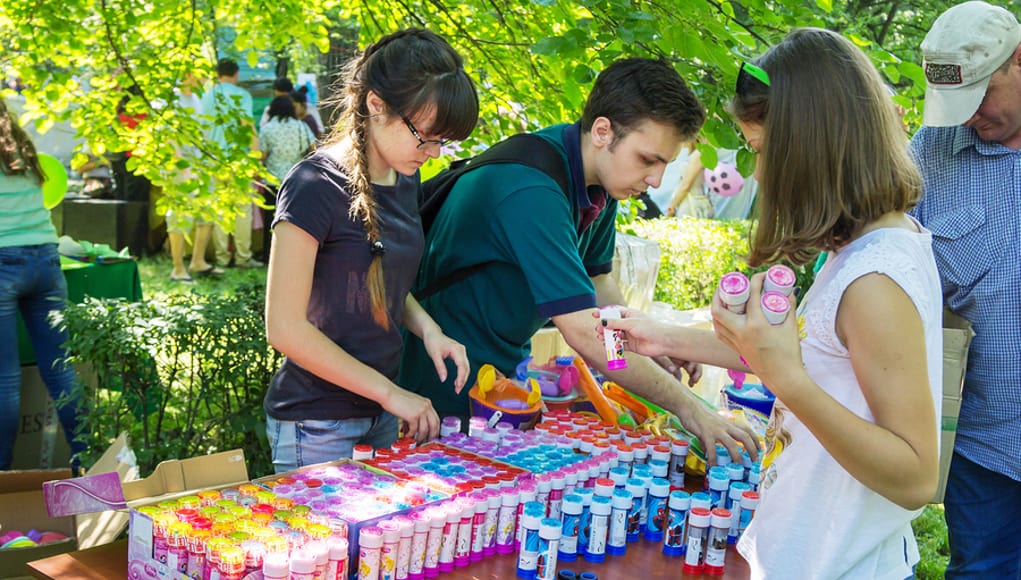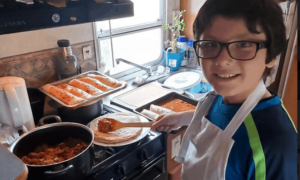21 Tips for Connecting Learners to Their Community

By Becs BoydPlace and Community Based approaches can be transformative for students, teachers, schools and communities. Making these approaches work means taking a fresh look at the school community, the
wider community and the environment, and working out how they can best support each other. Change takes time, and success, naturally, relies on a healthy physical and social learning environment with good relationships between educators, administrators and students. Many schools will already be connecting students with their local Place and helping them discover how to make their own place in the world a positive one.
Here are some pointers drawn from the experiences of real schools, students and teachers to help plant the seeds of Place in new school communities.
1) Learning and Caring About Place
Connecting and engaging students by using the local environment and culture as the starting point for learning and caring about the wider world
• Develop an inclusive and caring school ethos and culture, encouraging the school community—parents, teachers and students—to feel listened to, cared for, involved, respected and valued.
• Ground the whole school vision in sustainability—starting with the local Place and community and extending to the wider world—and share ownership for building the school’s identity with staff and students.
• Utilize leadership styles that involve shared planning, good communication and the active involvement of the school leader in teaching and school activities to support a ‘culture of care’.
• Nurture students’ sense of Place by allowing plenty of opportunity for unstructured play or quiet time in a familiar natural ‘Place’.
• Give teachers adequate support, resources, planning time, training and flexibility to develop their own teaching practices around Place.
2) Responsible Citizens
Empowering students to make a difference in the local environment and community, creating caring local and global citizens
• Encourage the development of links between students and local representatives, charities and businesses to help identify manageable projects where students can have a real impact.
• Give students plenty of time and opportunity, as part of school, to experience and work in the wider community.
• Encourage students to contribute to the development of community service provisions—for example, by encouraging markets for local food—to help disadvantaged groups.
• Build links with schools and communities in contrasting localities at home or abroad to raise awareness of diversity and global issues.
3) Active learners
‘Real-world’ problem-solving, so students create knowledge with teachers as guides and co-learners. Learning is often interdisciplinary.
• Use themes and action-based projects to make connections across subjects and issues, and link classwork into both the school community and into learning in the local environment and community.
• Collaborative planning of the curriculum framework is needed, particularly at secondary level, to find the most effective synergies and projects and avoid duplication. Allow teachers to help design the curriculum.
• Encourage ‘whole school’ learning that involves all students across all ages and classes. One way of doing this is to adopt an annual theme, like the forests, rivers and mountains themes at Sunnyside School.
• Encourage students to learn by doing and be ‘creators’ of knowledge, with the teacher as a guide and co-learner who may not have all the ‘answers’.
• Action-based and creative arts projects help with student participation and create more engagement and ‘ownership’, all while developing skills in strategic and critical thinking and problem-solving.
4) Effective contributors
Students’ questions and concerns play a central role in determining what is studied and how.
• Make students’ concerns and questions central to the learning agenda, helping them to identify issues they wish to address.
• Involve students in supporting the school community, including fundraising, and ensure that their contribution can make a real impact.
5) School in community
Building two-way partnerships between the school and the wider community, including local organizations and business, and making the most of the ‘outdoor’ or ‘community’ classroom
• Be ambitious and outward-looking—use the local environment and community as hands-on learning resources and encourage parents, community organizations and businesses to bring their issues to the school.
• Take students out into local wild places and community venues, and invite community members into the school.
• Make the school a model for a sustainable community that can act as a learning hub and role model for the wider community.
6) Relevant for the real world
Assessing school work not just on its competence, but also on its wider contribution to student growth, to the community and to sustainability
• Make use of a range of assessment methods. Materials from The Rural School and Community Trust on documenting and assessing Place-Based Learning are a helpful source.
• Encourage community organizations and parents to contribute to assessment—what difference has the school made to them?
This blog is part of our “Place-Based Education” blog series. To learn more and contribute a guest post for the series, check out the PBE campaign page. Join in the conversation on social media using #PlaceBasedEd. For more on Place-Based Education, see:
- 5 Levels of Place-Based Learning Implementation
- 6 Starting Points for Place-Based Learning
- Developing a Sense of Place Means a Deeper Connection to Learning
- Expanding & Enriching Relationships in Place-Based Education
This post originally appeared as “Sowing the Seeds of Place and Community Based Learning” in Clearing Magazine and was reposted with permission of the editor.
Becs Boyd explored place-based education programs throughout the Pacific Northwest through a Churchill fellowship. She resides in Scotland.







Md. Abdur Rahim
Very effective and formative tips which are so much fruitful for learners. Thanks.
Lily Bridgers
I like what you stated about how it's crucial to develop compassionate local and global citizens by allowing kids to make a difference in their neighborhood and environment. This is exactly why I want my children to be immersed in our community in the best ways possible. I will now search for child-bases community service they can be part of to have a sense of responsibility and belongingness outside of home. https://www.ampthecause.org/